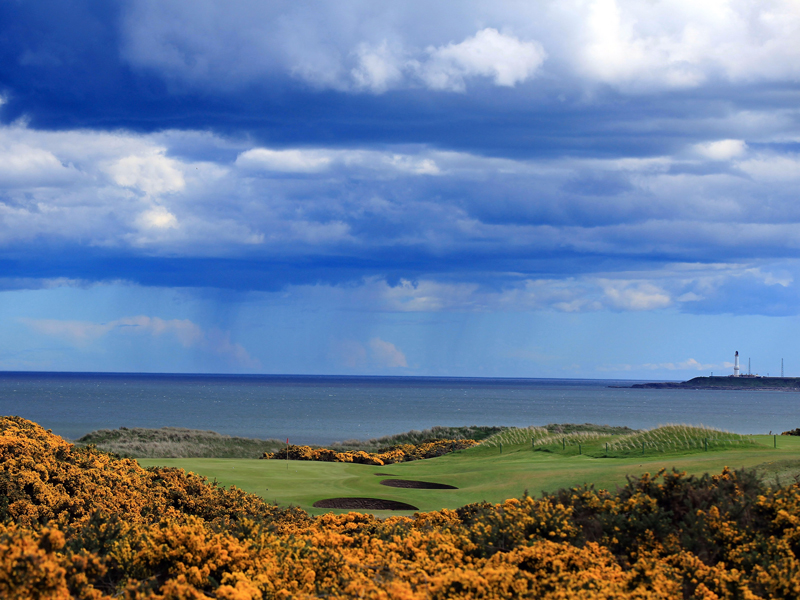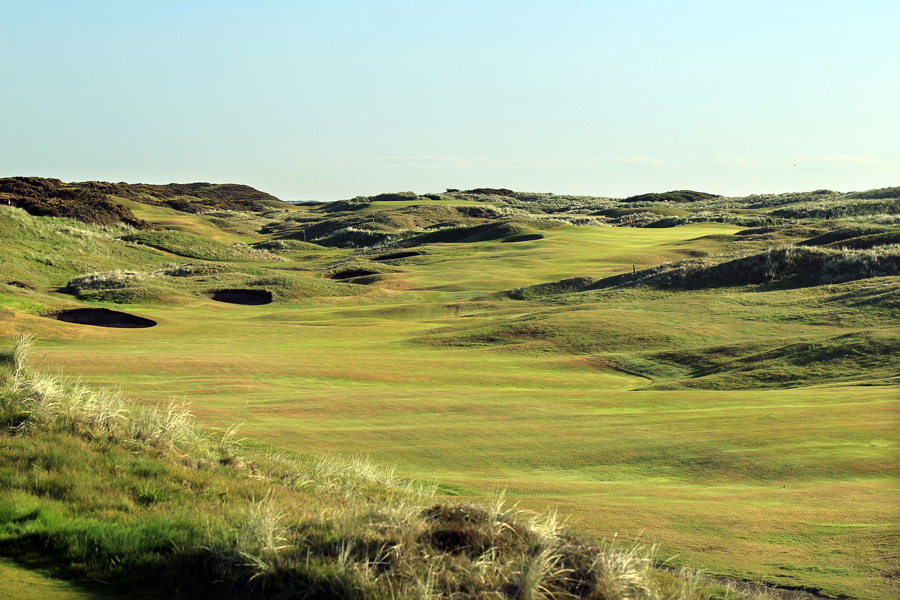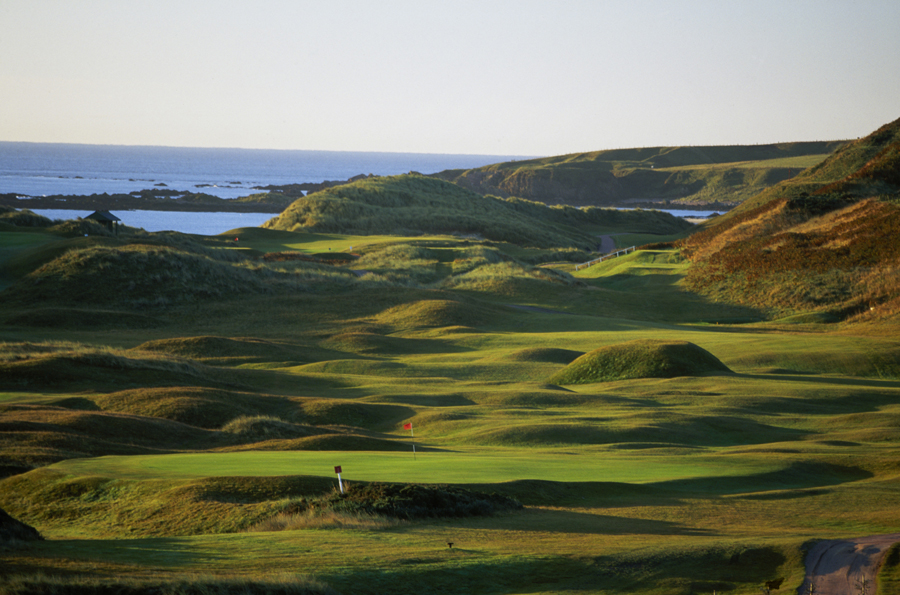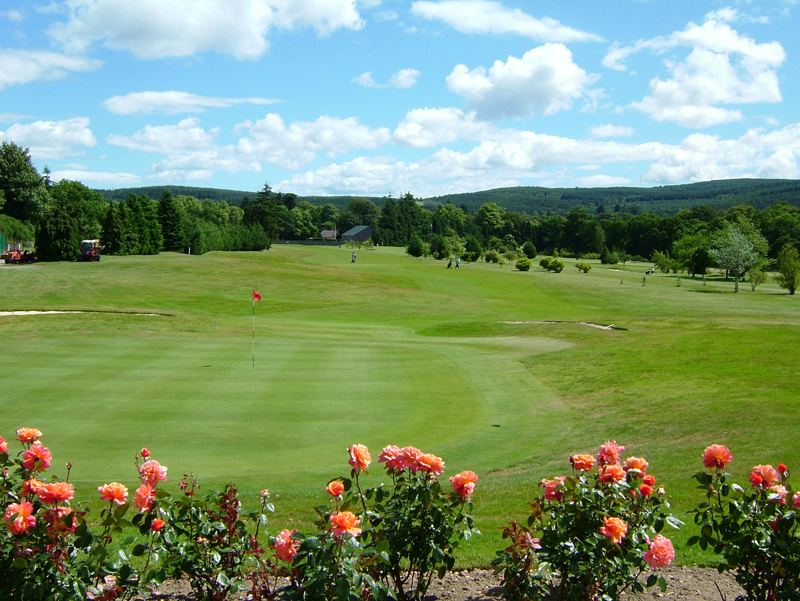The best golf courses in Aberdeenshire
Fergus Bisset visits some of the best layouts in his native Aberdeenshire


Fergus Bisset takes a look at some of the best golf courses in his native Aberdeenshire.
I was standing in the garden of my grandparents’ house on the Kent/Surrey border when my father told me we were moving back to Aberdeenshire. I was only six, but I can still remember the overwhelming wave of excitement I felt on hearing the news. For me, Aberdeenshire meant family holidays to explore the beaches, castles, forests and hills. It was also on those trips I was introduced to golf. Dad would put a sawn-off club in his bag and let me play the odd shot as he knocked it round one of the region’s many and varied courses.
Almost 30 years later I’m still in Aberdeenshire where my growing family now enjoys the castles, forests and hills. I haven’t been to the beach for a while but I must confess to playing the odd round of golf. Generally, If I head for the Aberdeenshire coast it’s with my clubs rather than a bucket and spade in the boot.
The region’s best renowned and most prestigious track is undoubtedly Royal Aberdeen or “Balgownie,” on the coast at the north end of the city of Aberdeen.
Founded in 1780, it’s the sixth oldest club in the world and a great sense of history and tradition is to be found here. It’s been the venue for many notable events over the years including the 2005 Senior British Open (won by Tom Watson.) Then, in 2011, the club welcomed the Walker Cup (won by GB&I.)
On course, the front-nine is, rightly, considered one of the finest stretches of links holes in the UK. The 1st forges out from the clubhouse straight towards the North Sea. The layout then turns to track the coastline and an exceptional run of challenging and eclectic holes follows. Carved through the dunes, the narrow and undulating fairways pass beautifully revetted pot-bunkers on the way to fast, sloping greens.

As you reach the turn at Royal Aberdeen, in front of you is the 3rd green and 4th tee of Murcar Links. I’ve often thought what a fabulous course you could make if you just continued down the coast using the front nines of both courses. There’s a famous story about a group of American tourists who unintentionally trialled the hypothetical layout. After putting out on Balgownie’s 9th, they made their way to Murcar’s 4th tee and kept playing. They ended up, rather confused and a little tired at Murcar’s clubhouse.
Get the Golf Monthly Newsletter
Subscribe to the Golf Monthly newsletter to stay up to date with all the latest tour news, equipment news, reviews, head-to-heads and buyer’s guides from our team of experienced experts.
Murcar Links is another high-quality and testing track. The holes climb, fall and twist amongst the dunes. Burns must be negotiated and fairways found if you’re to reach the greens in regulation. With gorse and deep rough, long carries and sizeable putting surfaces, there are few layouts providing such an exacting examination of your accuracy and stamina. At the end of this July Murcar Links will play host to the inaugural Saltire Energy Paul Lawrie Matchplay.
25 minutes drive north from Murcar is the small coastal town of Cruden Bay. Following the expansion of the railways in the 19th Century a golf course and magnificent pink granite hotel were built at Cruden Bay. The new golf resort was nicknamed “The Brighton of the North.” The hotel began to struggle in the 1930’s and following the Second World War it was demolished. Fortunately the same fate did not befall the golf course, it was bought by a group of businessmen in 1950 for the princely sum of £2,750.

Plateau greens, undulating fairways, blind shots, streams and gorse, Cruden Bay has it all. The course is unique and an absolute joy to play. Visible from most parts of the course is the imposing ruin of Slains Castle - supposedly an influence for Bram Stoker. The author holidayed in Cruden Bay when he was writing Dracula. The rest of the course’s surroundings have less of the gothic about them. In fact this is an extremely picturesque and peaceful location. Out amongst the dunes with the call of skylarks drifting on the breeze the real world seems rather distant.
If I randomly try to picture golf holes I’ve played, Cruden Bay features disproportionately often in my reflections. Even though this is because of the quirkiness of some of them, I think it’s the sign of an impressive course.
Just a little further up the coast, Peterhead is a layout often overlooked in favour of Aberdeenshire’s more famous links tracks. It’s a shame because Peterhead is an excellent and challenging course. Set in a fine swathe of links/dune land there are many holes reminiscent of Royal Aberdeen’s awesome front nine. Set on the northeast tip of Aberdeenshire, this is a famously breezy place. After playing in a tournament at Peterhead, one of the pros was heard to quip, “It was blowing at 40mph. And that was just in the clubhouse.”
Moving inland, I became a member of Banchory Golf Club on Royal Deeside when I was 10 and it’s here that I still play the majority of my golf. Banchory is a relatively short, supremely picturesque parkland layout that begins close to the town centre and heads out and back along the north bank of the shimmering River Dee.

Though lacking in length, Banchory is rarely taken apart when amateur or pro-am tournaments visit the club. It’s protected by its narrow fairways, small greens and swirling winds.
Banchory is a busy member’s club - the Saturday Medal regularly has upwards of 175 entrants. But visitors are made to feel welcome and guests and societies are enticed back year after year by the pleasant setting and relaxed atmosphere.
15 miles further up the Dee Valley, Aboyne is another of Aberdeenshire’s excellent inland tracks. It’s a course with a split personality. The first nine is played on the valley floor – enjoyable parkland holes framed by mature pines. But, on the 10th, the layout begins to show its teeth. You climb onto the hillside and play a stretch of holes more heath or moorland in nature – firm undulating fairways lined by gorse and thick rough. After the 13th you head once more down to the valley and the remaining holes are in the same vein as the front nine. Surrounded by heather capped mountains and sprawling pine forests, Aboyne is in a captivating setting for golf.
With flights to Aberdeen from many English airports and numerous courses within easy striking distance of the city, it’s an underrated and under-explored golfing region. Come visit!

Fergus is Golf Monthly's resident expert on the history of the game and has written extensively on that subject. He has also worked with Golf Monthly to produce a podcast series. Called 18 Majors: The Golf History Show it offers new and in-depth perspectives on some of the most important moments in golf's long history. You can find all the details about it here.
He is a golf obsessive and 1-handicapper. Growing up in the North East of Scotland, golf runs through his veins and his passion for the sport was bolstered during his time at St Andrews university studying history. He went on to earn a post graduate diploma from the London School of Journalism. Fergus has worked for Golf Monthly since 2004 and has written two books on the game; "Great Golf Debates" together with Jezz Ellwood of Golf Monthly and the history section of "The Ultimate Golf Book" together with Neil Tappin , also of Golf Monthly.
Fergus once shanked a ball from just over Granny Clark's Wynd on the 18th of the Old Course that struck the St Andrews Golf Club and rebounded into the Valley of Sin, from where he saved par. Who says there's no golfing god?
-
 JM Eagle LA Championship Prize Money Payout 2025
JM Eagle LA Championship Prize Money Payout 2025The LPGA Tour heads to California for the JM Eagle LA Championship, where the largest prize money payout of the season so far is on the table
By Mike Hall
-
 Corales Puntacana Championship Prize Money Payout 2025
Corales Puntacana Championship Prize Money Payout 2025The PGA Tour’s latest opposite field event features an attractive prize money payout and some former champions in the field
By Mike Hall